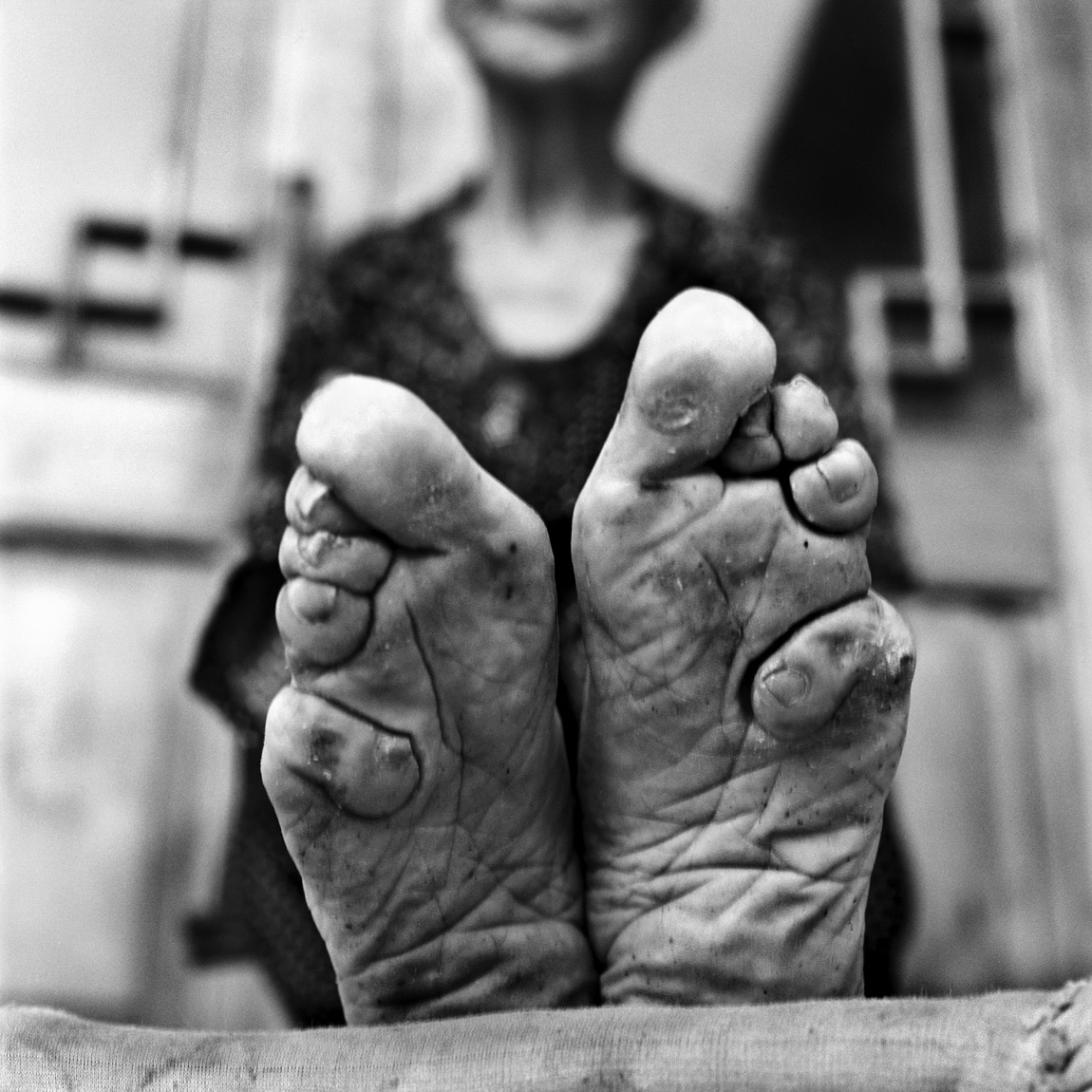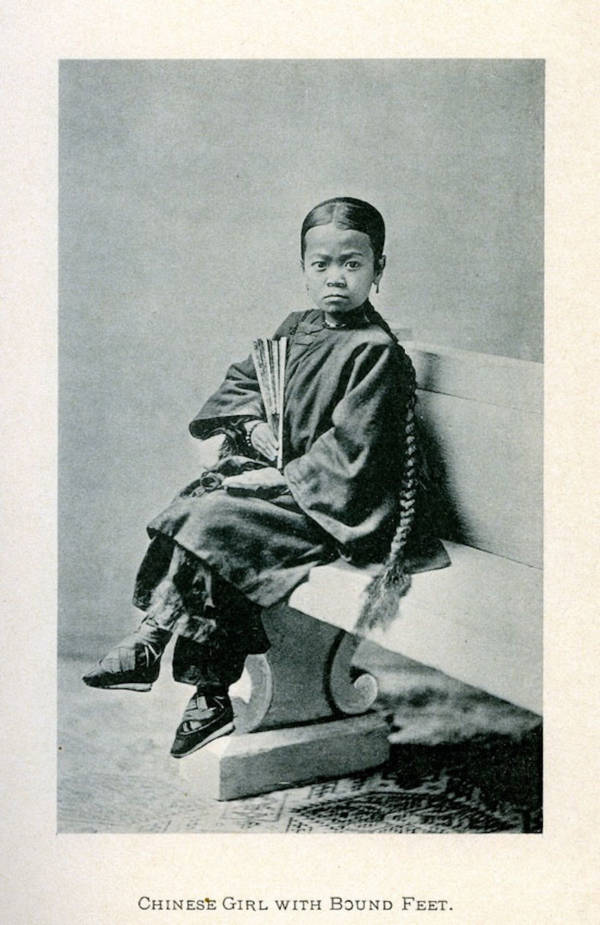Geisha foot binding has long been a topic of fascination and controversy, intertwining cultural traditions with historical practices that shaped the lives of women in certain regions. This practice, though not traditionally associated with geishas, sheds light on the broader cultural context of body modification in Japanese and East Asian history. Understanding this practice requires delving into its origins, cultural significance, and the societal implications it carries.
Foot binding, often mistakenly associated with geishas, was primarily practiced in China but also influenced other cultures. It symbolized beauty, status, and femininity in ancient societies, although it came with significant physical and social consequences. This article aims to explore the historical roots, cultural nuances, and modern perspectives surrounding foot binding, offering a comprehensive understanding of its impact on women's lives.
As we navigate through this exploration, we will uncover the myths and realities of geisha foot binding, examining its historical context, cultural significance, and the reasons behind its eventual decline. By the end of this article, you will gain a deeper appreciation for the complexities of cultural practices and their lasting legacy in modern society.
Read also:Unveiling The Extraordinary Journey Of Frederick Dump
Table of Contents
- The History of Foot Binding
- Geisha Culture and Foot Binding
- Origins of Foot Binding
- The Process of Foot Binding
- Cultural Significance of Foot Binding
- Health Effects of Foot Binding
- The Decline of Foot Binding
- Modern Perspectives on Foot Binding
- Comparative Analysis with Other Cultures
- Conclusion and Reflection
The History of Foot Binding
Foot binding originated in China during the Song Dynasty (960–1279 AD) and persisted for over a millennium before its eventual decline in the early 20th century. This practice involved tightly wrapping the feet of young girls, often as young as five years old, to prevent them from growing naturally. The goal was to create small, delicate feet, which were considered a symbol of beauty and status in traditional Chinese society.
Foot Binding in Historical Context
Historically, foot binding was a marker of social class, primarily practiced by wealthier families. Smaller feet were seen as a sign of femininity and refinement, making it an essential aspect of marriageability for women. However, the practice eventually spread to lower classes, as families sought to emulate the elite's lifestyle.
According to historical records, foot binding reached its peak during the Ming and Qing dynasties, with an estimated 50% of Chinese women undergoing the procedure. This widespread adoption underscores the cultural importance placed on this practice, despite its painful and debilitating effects.
Geisha Culture and Foot Binding
While foot binding is not traditionally associated with geishas, the two practices share cultural roots in East Asia. Geishas, known for their artistic talents and traditional performances, often wore traditional footwear such as geta or okobo, which required a specific gait and posture. This led to some misconceptions about the relationship between geisha culture and foot binding.
Myths vs. Reality
One common misconception is that geishas practiced foot binding to enhance their elegance. In reality, geishas relied on specialized footwear and rigorous training to achieve their graceful movements. Foot binding, on the other hand, was a Chinese tradition that did not directly influence Japanese geisha culture.
However, both practices reflect broader cultural norms regarding female beauty and societal expectations. Understanding these connections provides valuable insights into the historical and cultural contexts of East Asia.
Read also:Irvine Spectrum Movies Your Ultimate Guide To Entertainment
Origins of Foot Binding
The origins of foot binding are shrouded in myth and legend, with various stories attributing its inception to imperial courts and aristocratic circles. One popular tale traces its roots to a 10th-century court dancer named Yao Niang, who reportedly bound her feet to perform a mesmerizing lotus dance. Her small feet became the epitome of beauty, inspiring others to emulate her style.
Another theory suggests that foot binding evolved from the practice of wearing tight-fitting shoes, which gradually led to the more extreme form of physical modification. Regardless of its exact origins, foot binding quickly became a cultural phenomenon, spreading across China and influencing neighboring regions.
The Process of Foot Binding
The process of foot binding was both painful and painstaking, requiring years of gradual modification. It typically began between the ages of four and seven, when the bones in a child's feet were still soft and malleable. The procedure involved breaking the toes and arch of the foot, then tightly wrapping them with binding cloth to force the toes underneath and shorten the foot.
Steps in Foot Binding
- Cleaning and soaking the feet in warm water to soften the skin and bones.
- Trimming the toenails to prevent infection and cutting the flesh between the toes.
- Breaking the toes and arch using forceful manipulation.
- Wrapping the feet tightly with binding cloth to maintain the desired shape.
- Regularly tightening the bindings and massaging the feet to ensure proper shaping.
This process often resulted in lifelong deformities and health issues, but it was considered a necessary sacrifice for beauty and social acceptance.
Cultural Significance of Foot Binding
Foot binding held immense cultural significance in traditional Chinese society, symbolizing beauty, status, and femininity. Women with bound feet were seen as more attractive and virtuous, making them desirable marriage partners. This practice reinforced patriarchal norms, emphasizing female submissiveness and dependence on male providers.
Symbolism in Art and Literature
Foot binding frequently appeared in Chinese art and literature, where it was depicted as an ideal of female beauty. Poems and paintings often celebrated the delicate, lotus-like feet of women, reinforcing the cultural importance placed on this practice. These artistic representations helped perpetuate the myth of foot binding as a symbol of grace and refinement.
Health Effects of Foot Binding
Despite its cultural significance, foot binding had severe health consequences for women who underwent the procedure. The physical deformities caused by binding led to chronic pain, mobility issues, and increased susceptibility to infections. Many women experienced lifelong disabilities, making it difficult to perform daily tasks or participate in society.
Common Health Issues
- Arthritis and joint degeneration due to prolonged stress on the feet.
- Foot ulcers and infections resulting from poor circulation and hygiene.
- Difficulty walking or standing for extended periods.
- Psychological effects, including depression and low self-esteem.
These health effects highlight the immense cost of conforming to societal beauty standards, underscoring the importance of reevaluating cultural norms.
The Decline of Foot Binding
The decline of foot binding began in the late 19th and early 20th centuries, as modernization and Western influences challenged traditional practices. Reformers and activists, both Chinese and foreign, campaigned against foot binding, emphasizing its harmful effects on women's health and well-being. The practice was officially banned in 1912 following the fall of the Qing Dynasty, although it persisted in some rural areas for several decades.
Factors Contributing to Its Decline
- Rising awareness of women's rights and gender equality.
- Introduction of Western education and medical knowledge.
- Economic and social changes that prioritized practicality over aesthetics.
- Government policies and legal reforms aimed at eradicating harmful practices.
Today, foot binding is largely regarded as a relic of the past, although its legacy continues to influence cultural discussions about beauty and body modification.
Modern Perspectives on Foot Binding
In modern times, foot binding is viewed through a critical lens, highlighting the intersection of culture, tradition, and human rights. Scholars and activists examine the practice as a case study in understanding the complexities of cultural norms and their impact on individuals and societies. This perspective encourages a nuanced appreciation of historical practices while advocating for contemporary values of inclusivity and empowerment.
Lessons from Foot Binding
The history of foot binding offers valuable lessons about the dangers of rigid beauty standards and the importance of challenging harmful cultural practices. By examining the motivations behind foot binding and its consequences, we can better understand the ongoing struggle for gender equality and bodily autonomy in today's world.
Comparative Analysis with Other Cultures
Foot binding is not the only example of body modification in global history. Other cultures have practiced various forms of physical alteration, such as neck elongation in certain African and Asian communities or corseting in European societies. These practices share common themes of beauty, status, and cultural identity, underscoring the universal human desire to conform to societal expectations.
Cultural Parallels
- Neck elongation in the Kayan people of Myanmar, symbolizing beauty and wealth.
- Corseting in Victorian Europe, emphasizing a slim waistline as a sign of femininity.
- Tattooing and scarification in indigenous cultures, marking rites of passage and social status.
Comparing these practices highlights the diversity of cultural expressions while emphasizing the need for cultural sensitivity and understanding in modern discourse.
Conclusion and Reflection
Geisha foot binding, though not a direct association, provides a fascinating lens through which to explore the broader cultural context of body modification in East Asia. By examining the historical roots, cultural significance, and health effects of foot binding, we gain a deeper appreciation for the complexities of traditional practices and their lasting impact on society.
In conclusion, the story of foot binding serves as a reminder of the importance of challenging harmful norms and advocating for individual rights and freedoms. As we reflect on this history, let us take action by engaging in meaningful discussions, sharing this knowledge with others, and exploring related topics on our platform. Together, we can foster a more informed and inclusive understanding of cultural heritage and its relevance in today's world.



